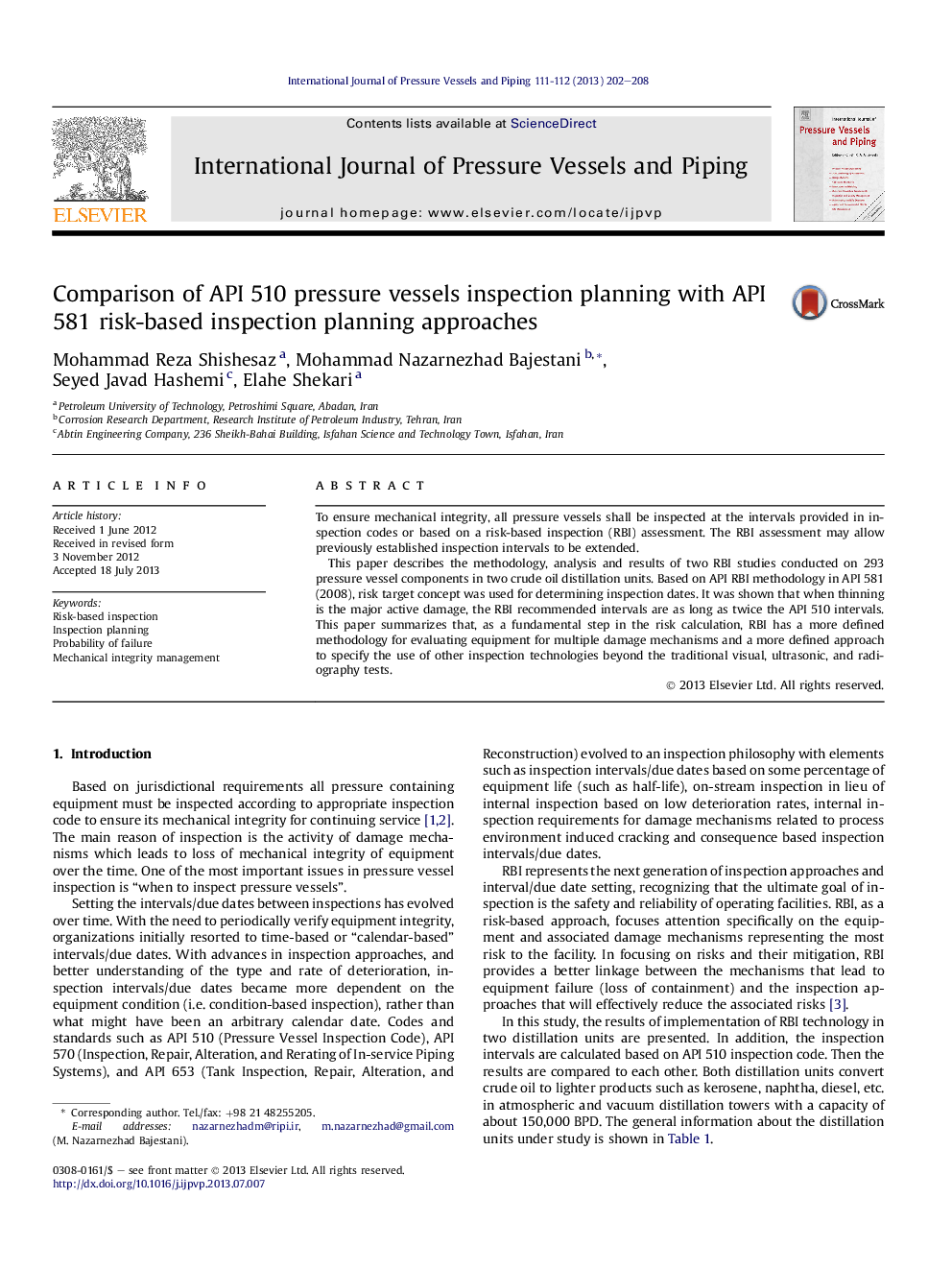| Article ID | Journal | Published Year | Pages | File Type |
|---|---|---|---|---|
| 785407 | International Journal of Pressure Vessels and Piping | 2013 | 7 Pages |
•RBI calculated inspection intervals are as long as twice of API 510 inspection code.•Two case studies verified the advantage of RBI in inspection planning.•RBI is a more reliable methodology when evaluating multiple damage mechanisms.•Damage factor calculations can be used for determining RSFa value in FFS assessments.
To ensure mechanical integrity, all pressure vessels shall be inspected at the intervals provided in inspection codes or based on a risk-based inspection (RBI) assessment. The RBI assessment may allow previously established inspection intervals to be extended.This paper describes the methodology, analysis and results of two RBI studies conducted on 293 pressure vessel components in two crude oil distillation units. Based on API RBI methodology in API 581 (2008), risk target concept was used for determining inspection dates. It was shown that when thinning is the major active damage, the RBI recommended intervals are as long as twice the API 510 intervals. This paper summarizes that, as a fundamental step in the risk calculation, RBI has a more defined methodology for evaluating equipment for multiple damage mechanisms and a more defined approach to specify the use of other inspection technologies beyond the traditional visual, ultrasonic, and radiography tests.
